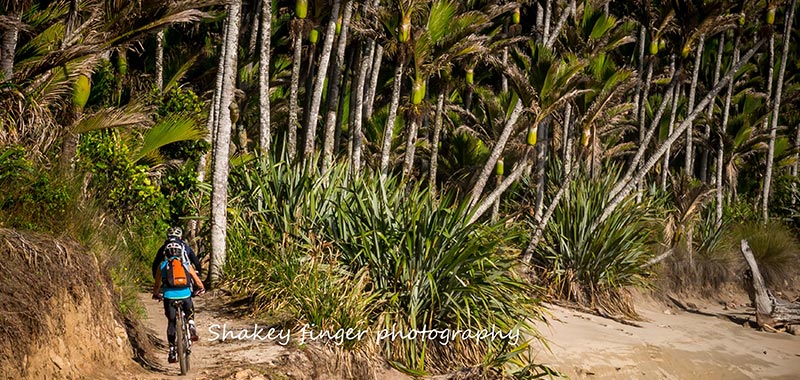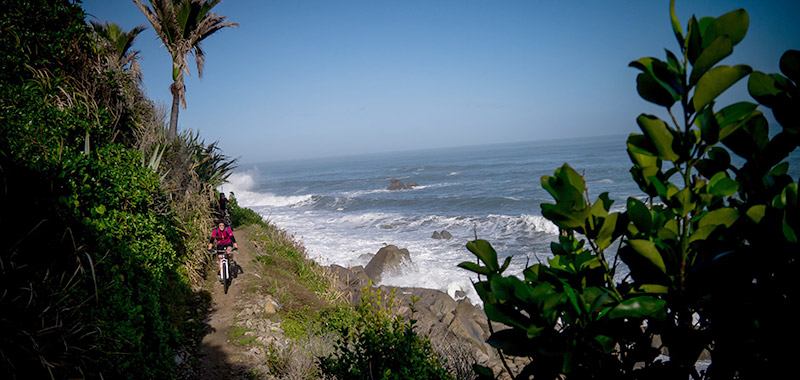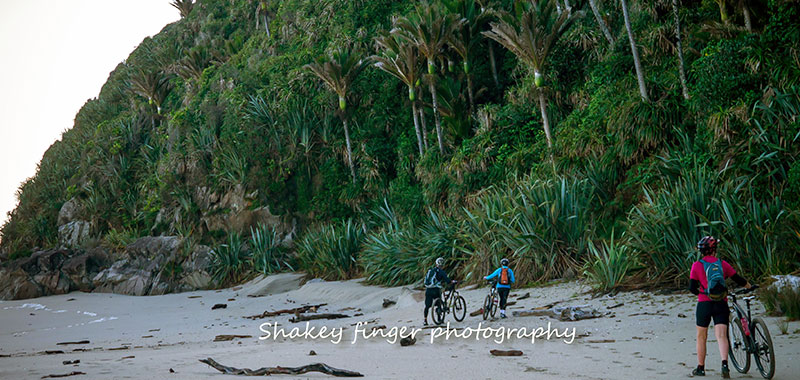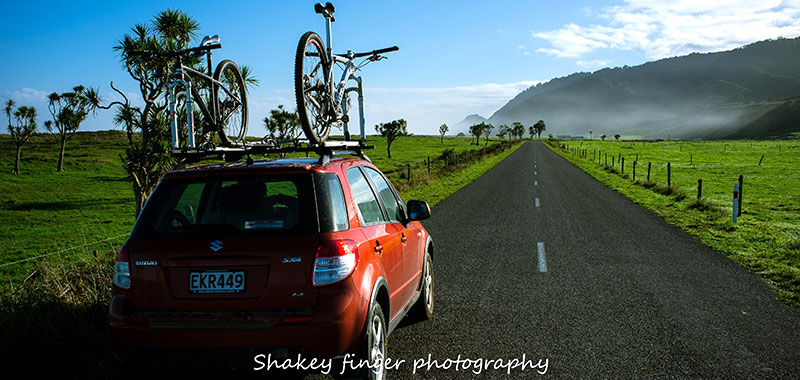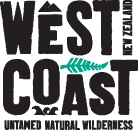Mountain Biking on the Heaphy Track
Mountain biking is now permitted on the Heaphy Track from May 1 to November 30.
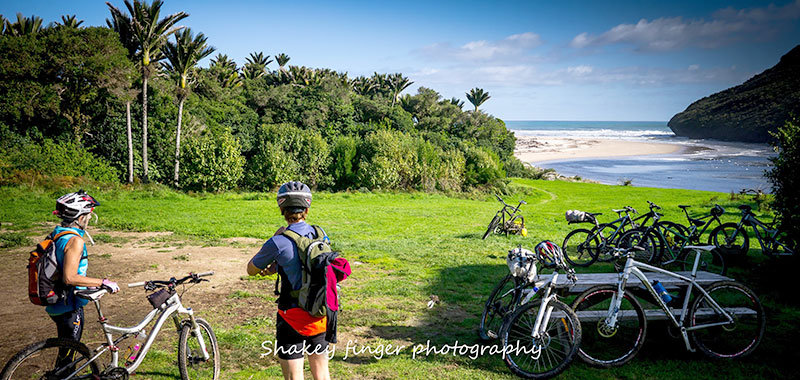
Heaphy Track Grade
The Heaphy Track is suited to riders with intermediate skills (Grade 3+), as there are some steep slopes and avoidable obstacles. However, in wet and/or cold weather, this can increase to advanced (Grade 4), when factoring in distance and remoteness. The majority of the track is well formed and hard surfaced, and is maintained to the “Great Walk” standard. Much work has been completed on the West Coast side and the rough and muddy sections of the track have been improved and many of the narrower swing bridges have been replaced and it is now possible to ride over them. Maintenance and improvement work is ongoing, so take care and observe all warning signs along the track.
Definition: Track Grade 3+ (Intermediate)
Steep slopes and/or avoidable obstacles possibly on narrow track and/or with poor traction. There may be exposure at the track’s outside edge.
Definition: Track Grade 4 (Advanced)
A mixture of long, steep climbs, narrow track, poor traction and obstacles that are difficult to avoid or jump over. Generally exposed at the tracks outside edge. Most riders will find some sections easier to walk.
The Ride:
The Heaphy Track is a 2 or 3-day ride, requiring a good level of fitness, self-reliance and an intermediate level of skills, to ride in a backcountry environment across a variety of landscapes. The Heaphy Track is also a multi-day tramping track and is managed as a Great Walk.
Heaphy Track Length:
The Heaphy Track is 78.4 kilometres long. It is 28 kilometres by road from Collingwood to Brown Hut and 16 kilometres by road from the track end at Kohaihai to Karamea.
Riding Times:
Fit, experienced riders should plan for two full days, staying overnight in a hut or designated campsite. Less experienced riders should anticipate a 3-day, 2-night trip. While day trips from both track ends are possible the full Heaphy Track experience requires at least one overnight stay to appreciate the natural beauty of the area.
Plan and Prepare:
It is highly recommended that Heaphy Track riders carry a puncture repair kit, spare tube, pump, basic tool kit and spare brake pads as the abrasive silica sands along the Gouland Downs section is very hard on brakes.
Fitness and Experience:
As a multi-day ride the Heaphy Track is much more demanding than other popular New Zealand multi-day rides, such as the Central Otago Rail Trail and the Queen Charlotte Track. Bikers need to have a good standard of fitness, a reliable bike, and carry all their food, clothes, overnight and personal gear, bike tools and equipment. This is a back-country environment where you need to be self reliant and at least one member of your party should know how to fix your bike. Before going you should practice riding your bike whilst carrying your gear in a backpack or carriers and dry bags.
What to take:
The Department of Conservation’s Heaphy Track brochure lists the clothes, food, and personal gear walkers should take. This list is also generally applicable to bikers. Expect changeable weather conditions including cold temperatures, rain, wind and possibly snow.
Bikers should also take bike gloves, two pairs of bike shorts, and a helmet. Bike gear should include a recently serviced mountain bike with knobbly off-road tyres, a bell or hooter, and new brake pads.
It is also recommended that you take 1 or 2 spare tubes per rider, puncture repair kit, folding tyre, pump, allen keys, chain breaker, tyre levers, duct tape, zip ties, chain lube and a groundsheet or fly to put down when working on your bike and if you wish to cover it at night.
If you have rim brakes then carry a spare set of brake pads. Be sure to book your huts or campsites and take your hut or campsite ticket.
Logistics:
Two parties riding in opposite directions can use each other’s car at the conclusion of the trip. Alternatively, commercial operators can shuttle you and your bike, or your car to the end of the track.
The Rules:
The Heaphy Track is shared with walkers and other bikers who may be coming the other way. There are several areas on the track where the giant land snail Powelliphanta may be on the track during the day, particularly after rain. Ride carefully and slowly through these areas, which are marked by signs – these snails are rare and unique to this part of New Zealand.
Please obey the Mountain Bikers Code:
You can ride mountain bikes on the Heaphy Track between May 1 and November 30:
- In both directions
- In a group of no more than six riders
- During the day only (from ½ an hour before sunrise to ½ an hour after sunset), to protect two threatened nocturnal species found on parts of the track: the Powelliphanta snail and roa (great spotted kiwi).
You are not permitted to take a mountain bike:
- Into or out of the national park by helicopter
- Into any huts or shelters or onto hut verandas or porches
- Off the formed and designated route
Furthermore:
- Signs and other markers clearly identify where mountain bikes can be ridden and where they are not allowed.
- You are responsible for removing your bike from the national park should it break down.
- If you wish to stay overnight in any of the huts or campsites on the Heaphy Track you will need to book your accommodation using the Department of Conservation’s booking system. This can be accessed through the Department’s website, an authorised booking agent or at one of the Department’s visitor information centres.
- The track may be closed to mountain bike use after storms, heavy rain or snow or high tide events, which may affect the integrity of the track particularly on the West Coast side.
- Mountain bike use of the track is monitored and recorded.
Pick up a copy of the Department of Conservation Heaphy Track brochure, which provides detailed information on the Heaphy Track, including how to get there, what to expect and what to take. The brochure is available at DOC Visitor Centres, Information Centres or can be downloaded from the Department of Conservation website.



